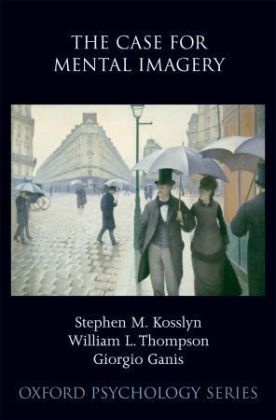Read more
Zusatztext This volume is the most important if not the final word on the great imagery debate. It examines issues critical to all cognition. For example! whether the brain is a general purpose computer and if the brain's structure imposes limits on what can be represented in our minds. Stephen M. Kosslyn is the former Chair of the Department of Psychology, currently Dean of Social Science and John Lindsley Professor of Psychology at Harvard University. His research focuses primarily on the nature of visual mental imagery, visual perception, and visual communication; he has published 5 previous books and over 275 papers on these topics. Kosslyn has received numerous awards, including the National Academy of Sciences Initiatives in Research Award, a Guggenheim Fellowship, and election to the American Academy of Arts and Sciences.William L. Thompson received his BA in psychology from McGill University in 1990 and since then has worked in Stephen Kosslyn's laboratory in the Psychology Department at Harvard University. Using the techniques of positron emission tomography (PET) and functional magnetic resonance imaging (fMRI), he has worked on numerous neuroimaging studies, investigating primarily visual mental imagery, but also color perception, hypnosis, and mental rotation. He has co-authored over 30 journal articles and book chapters, including extensive reviews and meta-analyses of the visual mental imagery literature.Giorgio Ganis has a Ph.D. in Cognitive Science from the University of California at San Diego. He is Assistant Professor in Radiology at the Harvard Medical School and Research Associate in psychology at Harvard University. His research has focused primarily on the neural correlates of visual cognition in humans, and he has published numerous scientific papers on this topic. Ganis has received various awards, including a McDonnell-Pew Program in Cognitive Neuroscience Grant. Klappentext When we try to remember whether we left a window open or closed! do we actually see the window in our mind? If we do! does this mental image play a role in how we think? For almost a century! scientists have debated whether mental images play a functional role in cognition. In The Case forMental Imagery! Stephen Kosslyn! William Thompson! and Giorgio Ganis present a complete and unified argument that mental images do depict information! and that these depictions do play a functional role in human cognition. They outline a specific theory of how depictive representations are used ininformation processing! and show how these representations arise from neural processes. To support this theory! they seamlessly weave together conceptual analyses and the many varied empirical findings from cognitive psychology and neuroscience. In doing so! they present the conceptual grounds forpositing this type of internal representation and summarize and refute arguments to the contrary. Their argument also serves as a historical review of the imagery debate from its earliest inception to its most recent phases! and provides ample evidence that significant progress has been made in ourunderstanding of mental imagery. In illustrating how scientists think about one of the most difficult problems in psychology and neuroscience! this book goes beyond the debate to explore the nature of cognition and to draw out implications for the study of consciousness. Student and professionalresearchers in vision science! cognitive psychology! philosophy! and neuroscience will find The Case for Mental Imagery to be an invaluable resource for understanding not only the imagery debate! but also and morebroadly! the nature of thought! and how theory and research shape the evolution ofscientific debates. Zusammenfassung Mental imagery has been a controversial topic in psychology. The major problem has been the inherently private nature of mental images. This book summarizes the arguments and positions, put...

